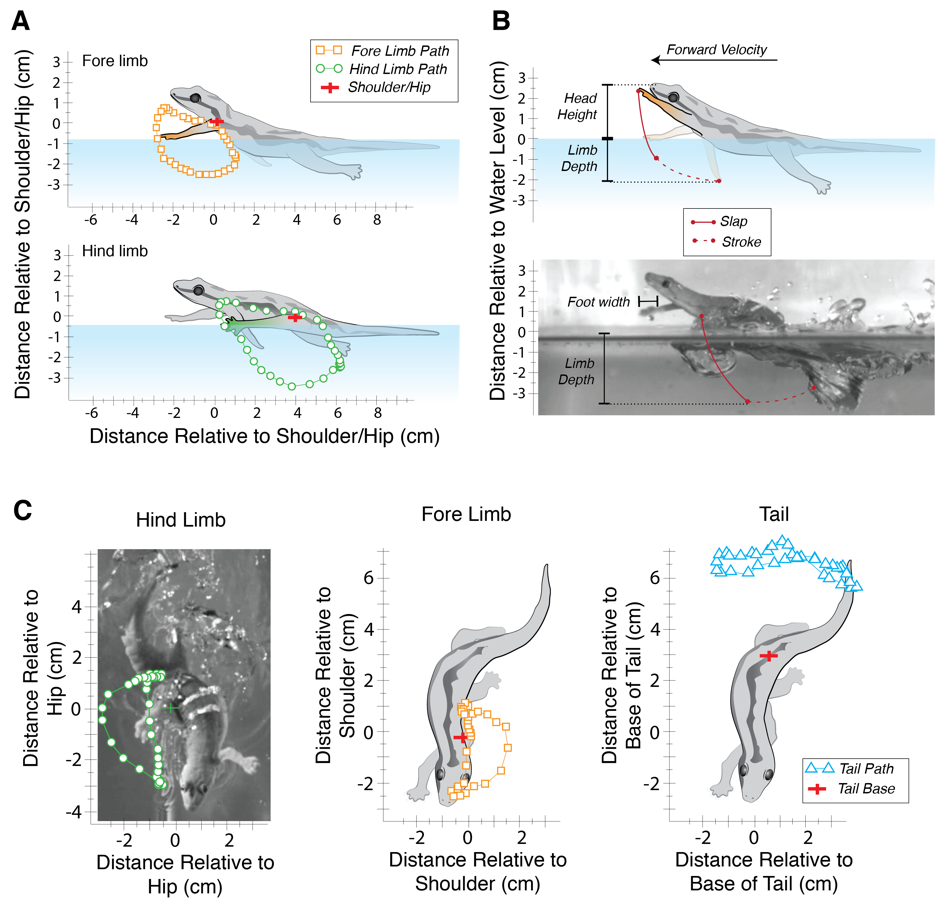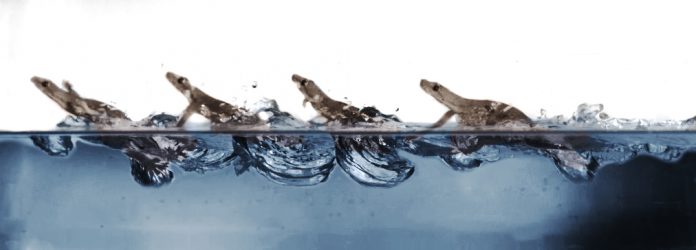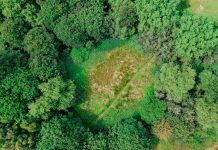Despite being just a few centimetres long, the gecko is known for its superior acrobatic skills and ability to power through the most challenging terrain: climbing trees, running across ice and walking on water
It’s official, the humble gecko is the Maserati of reptiles.
Scientists have now cracked perhaps its most head-scratching talent of all: how it walks on water. With further research, these insights could support engineers to develop swimming robots for extreme environments, such as flooded areas.
In the new paper published in Current Biology a team of researchers from the Universities of Oxford, California Berkeley, Rockefeller University, Washington, the Max Planck Institute and the Georgia Institute of Technology set out to see how the lizard moves and which of its features allow for its remarkable locomotion across water.
The team ran a series of experiments, such as gait analysis in water and soapy water conditions. They also studied high-speed video of the lizard seemingly walking on water, and compared it with clips of its other superior movements, such as running and climbing at similar speeds.
The study finds that by using a combination of water-walking strategies, such as, using its physical makeup to harness the benefits of surface tension and surface slapping, geckos are able to run along the surface of water.
using its physical makeup to harness the benefits of surface tension and surface slapping, geckos are able to run along the surface of water.
Jasmine Nirody, the paper’s lead author, who started the project as a researcher in the University of California, Berkeley lab of Robert J. Full, but is now postdoctoral research fellow in Oxford’s Department of Physics and All Soul’s College, was inspired to run the study by footage captured by co-author Ardian Jusufi, a biophysicist at Max Planck Institute for Intelligent Systems, when he was working in the jungles of Singapore, clearly shows the gecko skidding across across puddles to escape predators.
The team collected some Asian house geckos and set up an experiment in the lab. They built a long water tank, attached a plank across the top, and varied the water surface tension by adding soap. Then they placed the geckos on the plank and startled them by touching their tails. They shot high-speed video of the geckos darting across the water’s surface and studied it closely.
Initial observations suggested that the reptile’s unusual rapid movement was powered by a number of physical mechanisms, including it making a surface slapping motion with all four legs, and prompted the team to investigate further.
Nirody said:
“Locomotion across water has evolved in over a thousand species, and we know how most of them are able to do it. However, the lizard family is very diverse, and there is a big difference between how a pygmy gecko moves and a larger species for example.
Geckos run along the surface of the water using a combination of water-walking strategies; harnessing surface tension, surface slapping and body and tail undulation.
Their genetic makeup is phenomenal and allows them to do so many things. For example, their skin is a superhydrophobic material which repels water and stops it from being dragged down as it moves. The pads of their feet are equipped with microstructures that allow them to get a firm grip on many materials, and they also move in an s shape known as lateral undulation, much like an alligator or a water dragon, which helps it to gather thrust and move at speed.”

The soapy water experiment confirmed the role that surface tension plays in the process, as Nirody explains:
“Surface tension plays a crucial role in allowing the gecko to hold its head and upper body above the water’s surface. Adding soap into the equation reduced its speed by half and stopped it from maintaining its body weight at the air-water interface. This was remarkable to us because surface tension usually is only relevant for much, much smaller animals, like insects, and had recently been shown to not be important at all for another lizard that is known for its water running, the Basilisk.”
Surface tension plays a crucial role in allowing the gecko to hold its head and upper body above the water’s surface.
Judy Jinn, co-author on the paper and a NSF Graduate Research Fellow at UC Berkeley, adds:
“Geckos are too large to passively stand on top of the water without sinking like the pygmy gecko, yet too small to run fully upright like basilisk lizards. By using a mix of strategies to move rapidly on the water surface geckos are able to run on water almost as fast as they do on land (10.5 body lengths per second). The discovery of the geckos’ unique strategy may be a hint for how bipedal water walking evolved in basilisks.”
Of how the team were able to capture the gecko’s movements, when so many other people have been unable to, Jasmine said:
“We totally lucked out to be honest. One of our team members was in the right place, at the right time. Walking on water is energetically taxing for geckos, and not sustainable for long periods of time. It only really happens when they are panicked or chasing prey.”
Understanding geckos movements could help to inform the design of quadrupedal water-running robots for challenging environments, such as flood search and rescue efforts and general excavation. Previous gecko research led to the development of the jumping Tailbot, which was based on how lizards use their tails to stabilise themselves as they jump, a movement that could be very useful in rocky environments, after natural disasters such as hurricanes and volcanoes.
Jasmine adds:
“Nature has so much to teach us. Even though her designs are based on the random process of evolution she has had a long time to do a lot of trial and error. By studying natural organisms and how they interact with their environments, we can mimic and learn from everything nature has built so far.”
As part of this approach Jasmine will next study flagellated bacteria such as E. coli, to see if its structural design and movement could potentially support the development of nanobots for drug delivery in healthcare.
For further information please contact Lanisha Butterfield, Media Relations Manager on 01865 280531 or email lanisha.butterfield@admin.ox.ac.uk.











